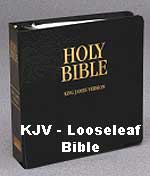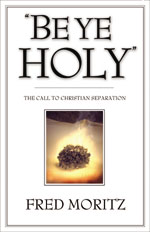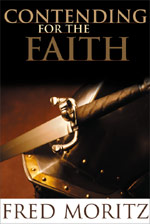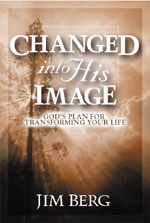| Resources to aid your Understanding |
THE JEWISH NEW YEAR AND THE RAPTURE
OF THE CHURCH
Is There A Scriptural Connection
Between The Two?
Back in late 1987 (or
early 1988) churches all over
Of
course Mr. Whisenant was wrong about the date and wound up looking foolish in
the eyes of the world—as has always been the case in the past when others have
tried to predict precisely when the Rapture of the Church would occur. In fact,
the main theme of the Epistle of Second Thessalonians was that the Apostle Paul
had to correct believers concerning the timing of the Rapture. In chapter two,
verses one and two, he said:
“But relative to the coming of our Lord Jesus Christ (the
Messiah) and our gathering together to [meet] Him, we beg you, brethren,
2 Not to allow your minds to be quickly unsettled
or disturbed or kept excited or alarmed, whether it be by
some [pretended] revelation of [the] Spirit or by word or by letter [alleged to
be] from us, to the effect that the day of the Lord has [already] arrived
and is here.” (Emphasis
mine).
False teaching to the
effect that the rapture had already taken place had spread among the believers
and of course that greatly agitated them because it appeared they had been left
behind! Also some Bible commentators believe that prior to this, many of them
thought the Second Coming was imminent and became so excited that they quit work
and waited in eager anticipation! These erroneous beliefs and actions prompted
Paul to write to them the second time.
The book by Edgar
Whisenant apparently stirred some interest in the subject of the Rapture and the
publisher later reported that quite a few people made professions of faith as a
result. So even though I read what he had to say at that time and felt it was an
error on his part to try to predict the exact date, some of the points he made
were very interesting. And one that continues to intrigue me is the prophetic
aspect of the Feasts of Israel where the Church is concerned.
In Leviticus 23 God
gave instructions to the nation of
Passover, observed on the 14th day of
the first month, Nisan, is a symbol of the crucifixion of Jesus Christ as He
shed His precious blood to atone for the sins of His
people.
Unleavened Bread began on the 15th day
and continued for a week. It is a symbol of the sinless perfection of the Lord
Jesus Christ in His life, death, and burial.
Firstfruits was observed on the 16th
day and is a symbol of His resurrection from the dead on the third day (1
Cor.15:4 and 20).
Then exactly
fifty days later (the root meaning of the English word “Pentecost”) during the
month of Sivan, the Holy Spirit of God descended upon believers and the Church
was born.
Thus
the first four feasts foreshadowed the basis for the Christian faith and the
founding of the Church. And with that being the case, what are we to conclude
about the last three feasts?
Next
in chronological order is Rosh Hashanah, the Feast of Trumpets, which occurs
a full three months after Pentecost. And since all the feasts preceding it
lead up to and include the formation of the Church, does it not make sense that
in all probability the time gap represents the Church Age? I am convinced it
does and that Rosh Hashanah—the Jewish name for their celebration of a new year
and during which rabbis around the world blow ceremonial ram’s horn trumpets
called shofars—is a symbol of the Church departing
this world. Please note that the Apostle Paul makes a connection between the use
of a trumpet and the Rapture:
“Take notice! I
tell you a mystery (a secret truth, an event decreed by the hidden purpose or
counsel of God). We shall not all fall asleep [in death], but we shall all be
changed (transformed) 52 In a moment, in the
twinkling of an eye, at the [sound of the] last trumpet call. For a trumpet
will sound, and the dead [in Christ] will be raised imperishable (free and
immune from decay), and we shall be changed (transformed)” 1 Corinthians 15:51-52 (Amplified Bible,
emphasis mine).
Some insist this has to be during the Tribulation
Period because of the reference to the “last trumpet” and therefore the
last of the seven “Trumpet Judgments” in Revelation 11:15. But they apparently
do not understand there is a “last trumpet” intimately associated with the Feast
of Trumpets! There are two types of trumpets used by observant Jews today:
one is made of silver and the
other—the shofar—from a ram’s horn.
And various types of short blasts on those trumpets are used during the
celebration, but the last blast signaling the end of the feast
is on the shofar trumpet and
distinctively different from the rest in that it is much longer in length.
A
parallel is seen in the first instance in the Old Testament where the word
“trumpet” is used. It is found in Exodus 19:13 (KJV) and refers to God’s
long trumpet call (Hebrew yobel—a trumpet blast and not the
trumpet itself) to
“…when the trumpet soundeth long, they shall come up to the mount” Exodus 19:13 (KJV).
“And it came to
pass on the third day in the morning, that there were thunders and lightnings,
and a thick cloud upon the mount, and the voice of the trumpet exceeding loud;
so that all the people that was in the camp trembled” Exodus 19:16
(KJV)
“And mount Sinai
was altogether on a smoke, because the LORD descended upon it in fire: and the
smoke thereof ascended as the smoke of a furnace, and the whole mount quaked
greatly. 19 And when the voice of the trumpet sounded long, and waxed
louder and louder, Moses spake, and God answered him by a voice. Exodus 19:18-19
(KJV)
Therefore, I believe that sometime in the
future the Church is going to “come up” to meet the Lord in the air at the
conclusion of Rosh Hashanah!
For this premise to be correct, the last two feasts must also correspond to prophetic events that are yet future, so let us see if they appear to fall into place.
The Feast of Trumpets begins on the first day of the seventh month Tishri and then on the tenth day the Day of Atonement is observed. The last three feasts all occur during the seventh month and of course the number seven is God’s number of perfection and completion.
In Lev.23:27 God commanded the children of
If so, the next feast would represent the
Millennial Reign of Christ and I believe the Feast of Tabernacles does just
that. The most joyous of all the feasts, it was celebrated five days
after the Day of Atonement (the intervening days perhaps representing the 45 day
gap between the Battle of Armageddon and the onset of the Millennium found in
Daniel 12:11-12) and depicts Israel living in “booths” or “brush
arbors”—temporary shelters intended to remind Israel of their sojourn in the
wilderness and subsequent deliverance into the Promised Land. While
Canaan served as a type of the Promised Land where Old Testament
Oh, by the way, did I fail to mention that Rosh Hashanah this year is September 13th?
If you have been born again and received Jesus Christ as your personal Savior, but have been very lukewarm in your spiritual walk with Him, you need to immediately ask Him for forgiveness and for renewal. He will instantly forgive you, and fill your heart with the joy of the Holy Spirit. Then, you need to begin a daily walk of prayer and personal Bible Study.
If you have never placed your trust in Jesus Christ as your Savior, but have come to sense His reality and the approaching End of the Age, and want to receive His FREE Gift of Eternal Life, you can do so now, in the privacy of your home. Once you truly believe in Him as Lord and Savior, you are spiritually Born Again, and are as assured of Heaven as if you were already there. Then, you can rest assured that the Kingdom of Antichrist will not touch you spiritually. If you would like to become Born Again, turn to our Salvation Page now.
We hope you have been blessed by this ministry, which seeks to educate and warn people, so that they can see the coming New World Order Kingdom of Antichrist in their daily news.
Return to Pastoral Articles index
Finally, we would love to hear from you. You can write us at:
Cutting Edge Ministries, C/O Pastor Ron Riffe
P.O. Box 26
Gordo, AL 35466
You can also E-Mail Pastor Ronald Riffe regarding questions or comments about this article.
God bless you



